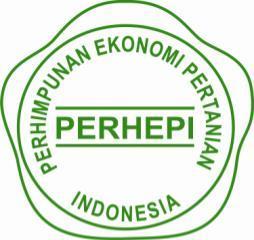Respon Pertumbuhan dan Hasil Tanaman Kale (Brassica oleracea L.) terhadap Frekuensi dan Dosis Pupuk NPK dalam Bentuk
DOI:
https://doi.org/10.51852/pywpb753Keywords:
Encapsulated fertilizer; , fertilizer dosage, frequency, kale, NPKAbstract
Encapsulation in the combination of specification components with additional elements to create a capsule as a protective material. NPK fertilizer is one of the inorganic fertilizers that is used very efficiently in increasing the availability of macro nutrients N, P, and K replacing single fertilizers which are sometimes difficult to obtain and very expensive. Kale itself is a plant that is rich in nutrients, moreover it contains many high antioxidants and other good compounds and is also classified as a superfood plant. However, the development in Indonesia is still low due to land degradation and fertilizers that have been contaminated by other materials. The use of encapsulation in fertilizers is needed because it provides many benefits such as increasing soil binding capacity to water, facilitating root growth, storing water longer, efficient use and can be used in agricultural land, plantations, and critical land reclamation. The provision of NPK encapsulation can increase the effectiveness of plants, increase the substance of soil humus, growth hormones, enzymes and organic compounds in the soil. This study used a completely randomized design with two factors, namely the frequency of fertilization (once, twice, and thrice). The second factor is the encapsulation dose with 4 levels including control, 10, 15, and 20 gram. The results showed the best results in N1P1 for plant height, N1P2 for plant fresh weight with a dose of 10 grams and a fertilization frequency of 1 time and a dose of 10 grams and a fertilization frequency of 2 times. Giving a dose of NPK encapsulation of 10 grams (N1) is proven to increase growth and yield in kale plants and can be recommended as an alternative to kale plant cultivation.References
Agustin DA, Wibowo AA. 2021. Teknologi enkapsulasi: teknik dan aplikasinya. DISTILAT: Jurnal Teknologi Separasi. 7(2): 202–209.
Akhiriana E, Dewi M, Akhmadi FS, Sholihah SM. 2023. Respon Pertumbuhan Beberapa Jenis Kale pada Budidaya Hidroponik Menggunakan Penambahan Nutrisi Kombinasi AB Mix dan Pupuk Organik Cair (POC). In Prosiding Seminar Nasional Fakultas Pertanian UNS. 7(1): 117-123.
Arief M, Nursangadji. 2022. Pertumbuhan dan hasil tanaman sawi (Brassica juncea L.) pada berbagai dosis pupuk NPK. Jurnal Agrotekbis. 10 (5):727–733.
Arifin Z, Suryani IS. 2022. Penggunaan biochar anorganik nitrogen dalam menghasilkan perkembangan dan produksi tanaman sawi pakcoi pada tanah lapisan bawah (sub soil). Agrovigor: Jurnal Agroekoteknologi. 15(1): 54–62.
[BPS] Badan Pusat Statistik Republik Indonesia. 2018. Statistik Tanaman Sayur dan Buah Semusim Indonesia 2018. Jakarta: Badan Pusat Statistik.
Behin J, Nader S. 2016. Utilization of waste lignin to prepare controlled-slow release urea. International Journal Recycle Organic Waste Agriculture. DOI 10.1007/s40093-016-0139-1:1-11.
Dahlianah I, Novianti D. 2020. Respons pertumbuhan tanaman sawi caisim (Brassica juncea L.) terhadap pupuk organik cair buah pepaya (Carica papaya L.). Indobiosains. 64–71.
Dewanti S K, Fuskhah E, Sutarno. 2019. Pertumbuhan dan produksi Kale (Brassica oleracea var. Acephala) pada dosis pupuk Kascing dan jarak tanam yang berbeda. Jurnal Pertanian Tropik. 6(3): 393–402.
Fajri LN, Roedy D. 2018. Pengaruh kerapatan tanaman dan pupuk urea terhadap pertumbuhan dan hasil tanaman kale (Brassica oleracea var acephala). PLANTROPICA Journal of Agricultural Science. 3(2): 133–140.
Fauzi I, Sulistyawati S, Purnamasari RT. 2022. Pengaruh dosis pupuk nitrogen pada pertumbuhan dan hasil tanaman sawi (Brassica juncea L.) varietas Samhong King. Jurnal Agroteknologi Merdeka Pasuruan. 5(2): 37-43.
Hanum NN, Jazilah S. 2021. Pengaruh konsentrasi dan interval pemberian POC Morinsa terhadap pertumbuhan dan produksi tanaman kale (Brassica Oleracea Var. Acephala). BIOFARM: Jurnal Ilmiah Pertanian. 17(1): 14–22.
Himmah NIF, Djajakirana G, Darmawan D. 2018. Nutrient release performance of starch coated npk fertilizers and their effects on corn growth. SAINS TANAH-Journal of Soil Science and Agroclimatology. 15(2): 104–114. doi: 10.15608/stjssa.v15i2.19694.
Lu J, Cheng M, Zhao C, Li B, Peng H, Zhang Y, Hassan M. 2022. Application of lignin in preparation of slow-release fertilizer: Current status and future perspectives. Industrial Crops and Products. 176: 114267.
Praciska IO, Zainudin A, Septia ED. 2021. Application of dosage and interval of fertilizer on kale (Brassica oleracea var. Acephala). Journal of Tropical Crop Science and Technology. 3(1): 61–73.
Pramushinta IAK, R Yulian. 2020. Pemberian POC (pupuk organik cair) air limbah tempe dan limbah buah pepaya (Carica papaya L.) terhadap pertumbuhan dan produktivitas tanaman pakcoi (Brassica Rapa L.). Journal of Pharmacy and Science: 5(1).
Sempeho SI, Kim HT, Mubofu E, Hilonga A. 2014. Meticulous overview on the controlled release fertilizers. Advances in Chemistry. 2014: 1–16. doi: 10.1155/2014/363071.
Setiawan AA. 2021. Pengaruh pola panen terhadap produktivitas tanaman kale curly (Brassica oleraceavar Acephala [skripsi]. Makassar: Universitas Bosowa.
Siga LA, Maria AW, Reni N. 2021. Pengaruh pupuk organik terhadap pertumbuhan dan hasil tanaman kale (Brassica oleracea acephala) sistem vertikultur. Jurnal Ilmiah Respati. 12(2):133–146.
Singh M, Goswami SP, Sachan P, Sahu DK, Beese S, Pandey SK. 2024. Nanotech for fertilizers and nutrients-improving nutrient use efficiency with nano-enabled fertilizers. Journal of Experimental Agriculture International. 46(5): 220–247.
Yoedhistira AR, Darmawan AA. 2022. Pengaruh pemberian arang sekam dan pupuk kotoran ayam terhadap pertumbuhan dan hasil tanaman sawi hijau (Brassica juncea L.). Savana Cendana. 7(1): 16–20.
Zulvanissa A. 2023. Respons pertumbuhan dan hasil tanaman Kale Curly (Brassica Oleracea var. Acephala) terhadap penggunaan jarak tanam dan dosis pupuk Kascing [disertasi]. Bandung: UIN Sunan Gunung Djati.
Downloads
Published
Issue
Section
License
Copyright (c) 2025 Jurnal Agroekoteknologi dan Agribisnis

This work is licensed under a Creative Commons Attribution-NonCommercial 4.0 International License.


1.png)









